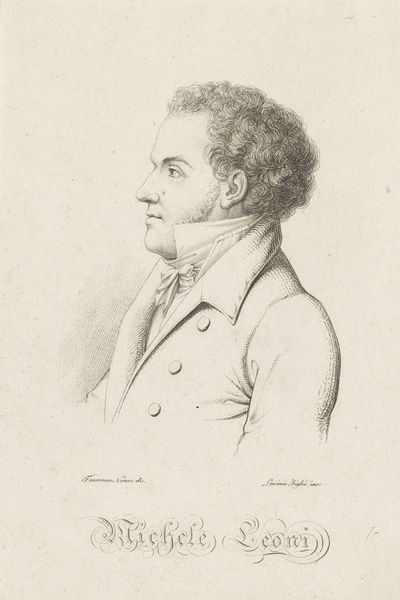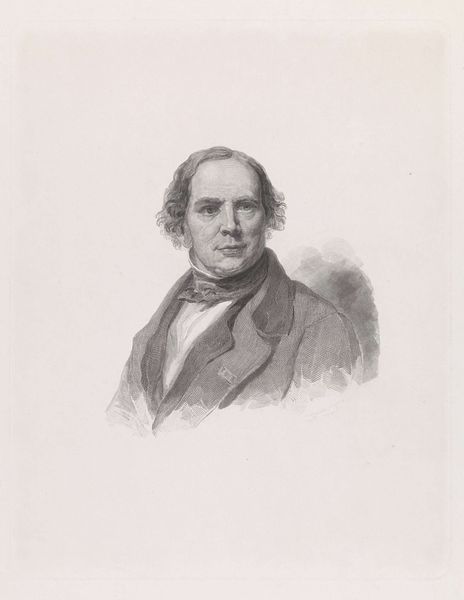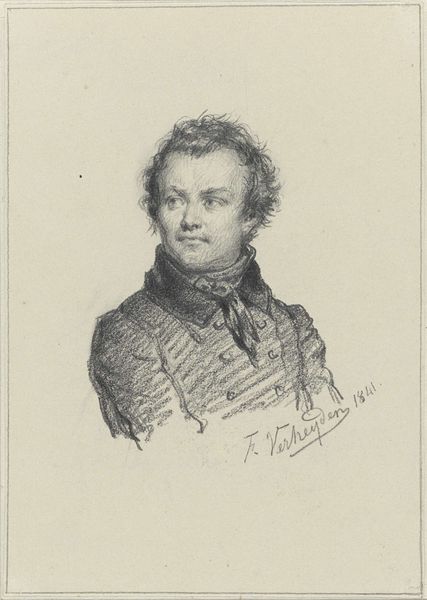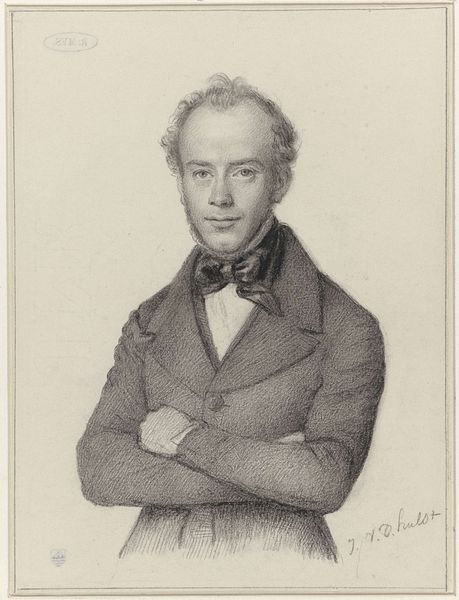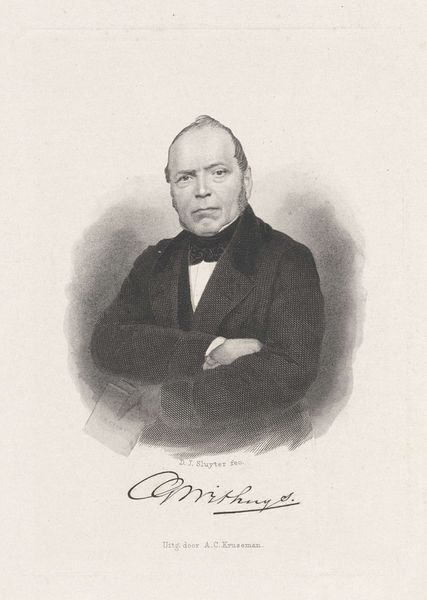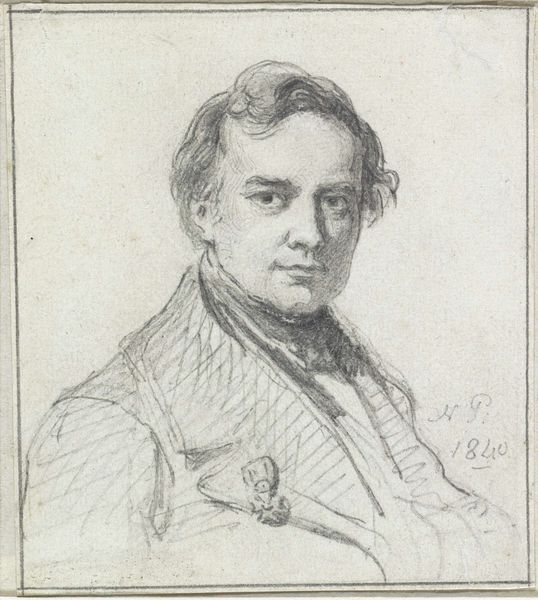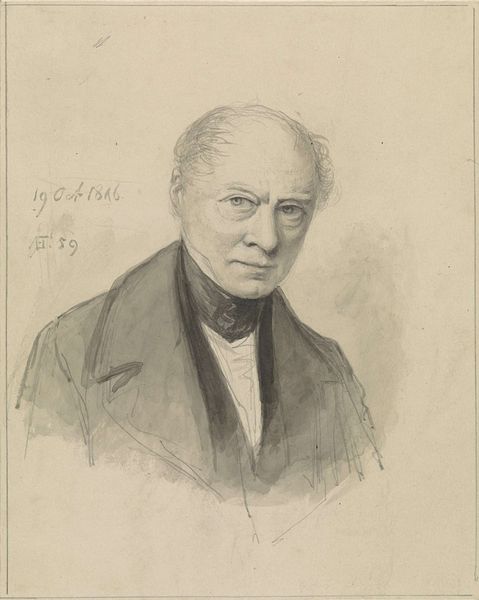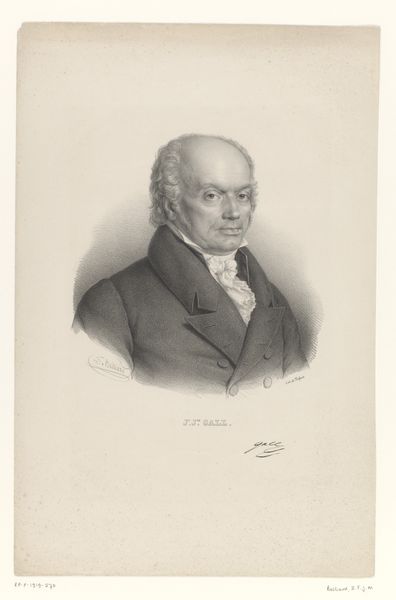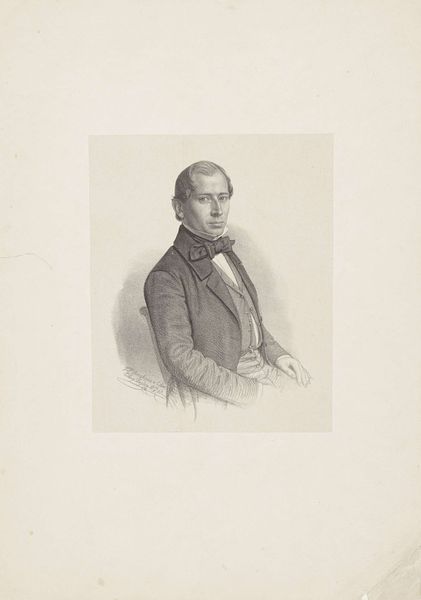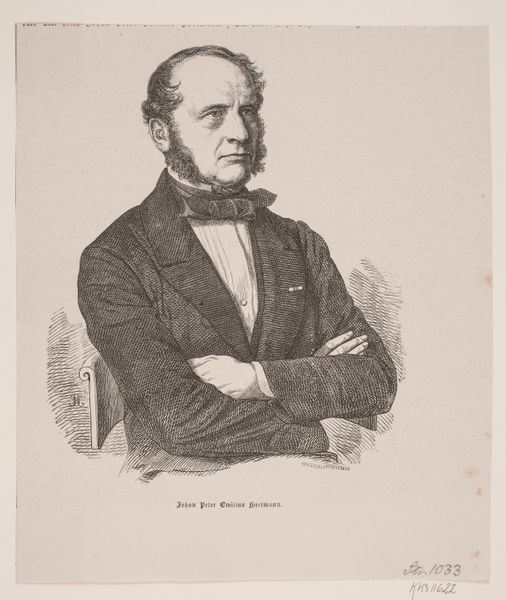
print, etching, engraving
#
portrait
#
neoclassicism
# print
#
etching
#
figuration
#
line
#
engraving
Dimensions: height 70 mm, width 55 mm
Copyright: Rijks Museum: Open Domain
Curator: The work before us, dating circa 1800-1900, is an etching and engraving titled "Portret van G.J.J. van Os," attributed to the Monogrammist ML. Editor: There's a fascinating tension in the material execution here. Look how the delicacy of the etched lines tries to soften a distinctly neoclassical austerity of the portrait itself. It feels quite...controlled. Curator: Controlled, perhaps reflecting the symbolic intent of neoclassicism itself. Note the subject’s direct gaze. It evokes Enlightenment ideals of reason and self-possession, a visual language designed to project authority and virtue through clear lines. Editor: But is that clarity reinforced or undermined by the medium? Etching, particularly, requires acid, a process of eating away. The corrosive process made evident in the image. Even with engraving on top of etching, there is no hiding the acid treatment. Look closely and you’ll notice the slight fuzziness, the imprecise nature of the line that's very unlike, say, an impeccably crafted drypoint. There’s an irony in employing a method of erosion to create such an image of seemingly unshakable presence. Curator: An interesting point. That "fuzziness", as you call it, might not simply be technical, but part of the expressive language. Perhaps that slight ambiguity is to hint at human frailty and imperfection underlying the surface of the neoclassical hero. Editor: Or, the material reality just falls short of ideological ambition. Maybe we can think of this etching as part of a wider system of print production; a portrait made reproducible to be distributed and consumed on a larger scale. Who was van Os, and what function did this print serve? This engraving speaks as much about social access and visual economies as any perceived virtue of the sitter. Curator: Perhaps. Still, I find compelling the use of line itself. Think about the historical symbolism embedded in a 'clean' line, its cultural weight suggesting a certain purity, rationality, and, again, a reaching for ideal forms beyond the earthly. Editor: And I’m wondering about the etcher’s labor – how long did it take, what was the print run, who purchased this print, and what value was it to them? I can't shake that focus on the processes by which such meanings are created. Curator: Ultimately, what strikes me most is how it speaks to a constant negotiation between projecting ideals and wrestling with human imperfections. Editor: Agreed. And how material choices subtly reveal so much about these contradictions.
Comments
No comments
Be the first to comment and join the conversation on the ultimate creative platform.


